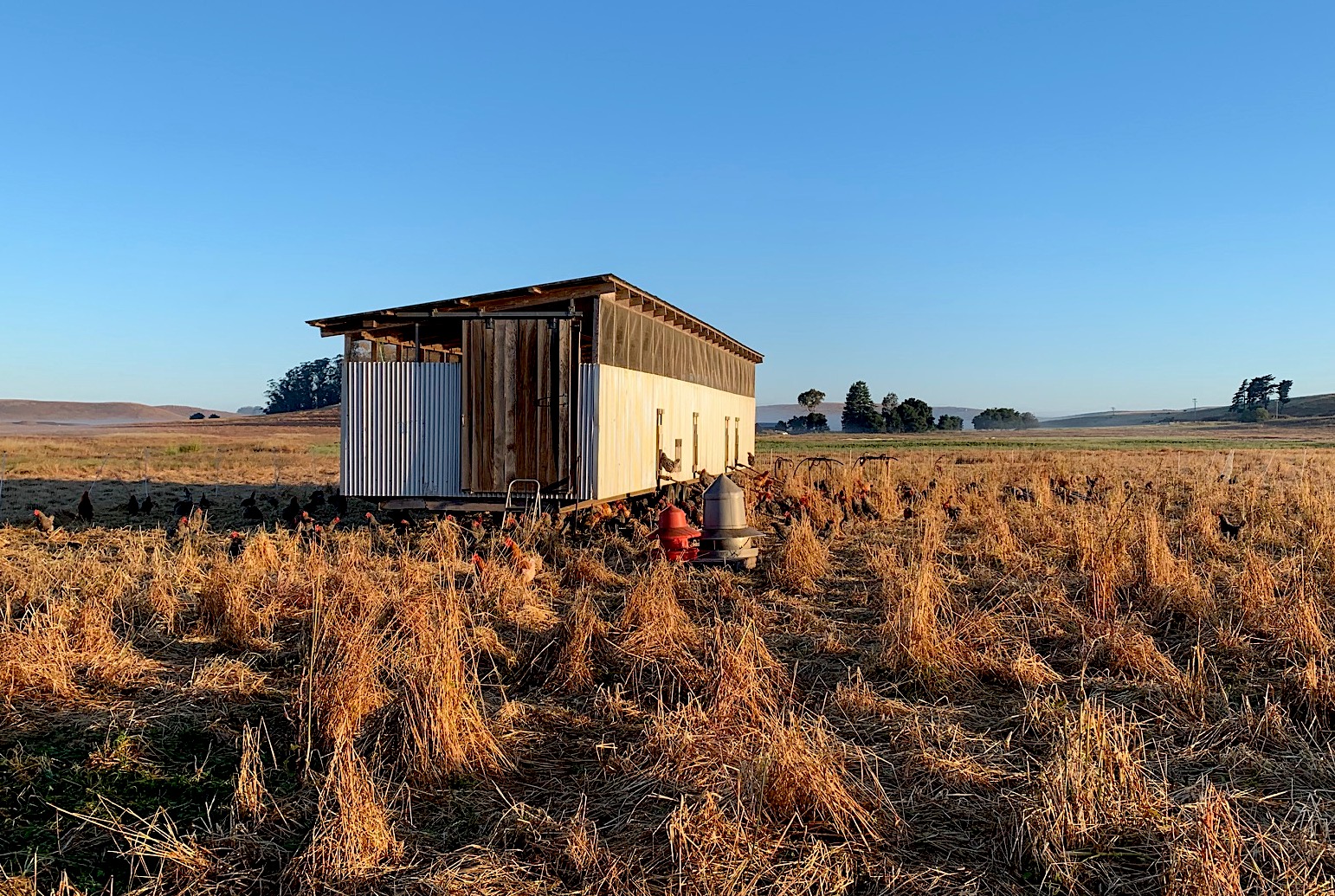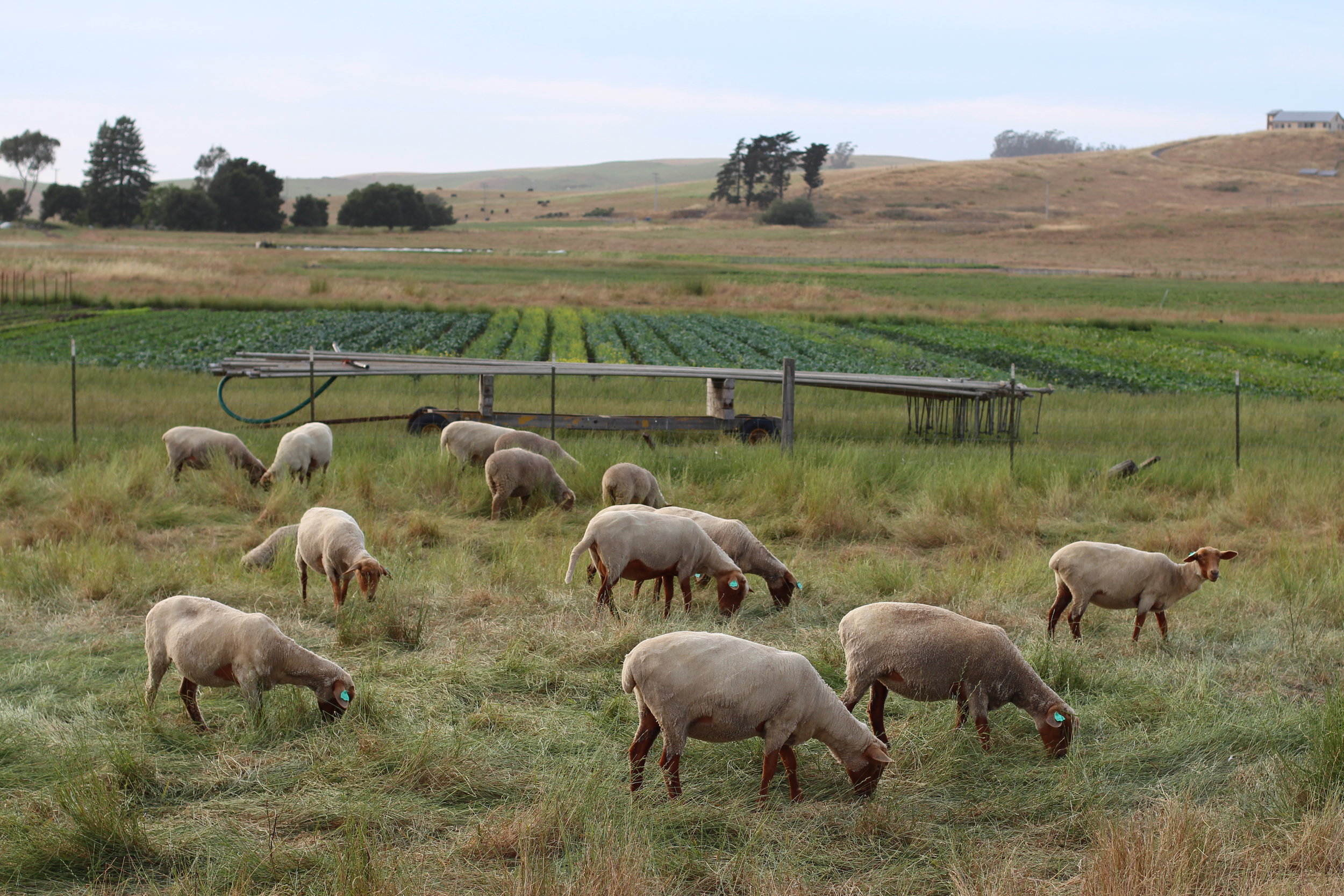As in life, success in farming often arrives from keeping the proper balance, the right amount of water to sun to nutrients and more. It is a simple equation and yet so difficult. We need to adjust our actions with the weather, watching the plants and more for clues as to their needs. It is hard to predict, although we gain knowledge the longer we are here.
In the tunnels, the environment is largely controlled by us and also very different from outside, much more humid and moist. The plants are very susceptible to disease so we water the least amount necessary. We were having germination problems when direct seeding spinach so we tried to water a little more to help sprout the spinach. Unfortunately all the basil in the tunnels then got disease, so we will not have any more of the genovese basil for the season. Luckily there is purple and thai basil in the pick your own field.
The beautiful blue chicory flower blooming in the picture below is a joy to see through the summer in the pasture. We added to the seed to our cover crop mixture this year to increase the diversity of seed in the mix. Unfortunately we have learned that it is a hard plant to eliminate and it has become a weed in the vegetable fields.
This week’s pick list:
Cabbage
Eggplant
Tomatoes
Beets
Chard
Potatoes
Parsley, Cilantro, Dill
Carrots
Summer squash
Lettuce
Cucumbers
Hot Pepper
Sweet Pepper
Spinach
Snap peas
Celery
Arugula
Scallions
Onions
Corn (last week)
Melons
Garlic
Strawberries
Dried tea herbs (plus fresh in the pick your own!)
Dried Peppers
Revolution Bread
I have not made this recipe but I was fascinated to hear you could make a preserve simply out of melons. We have so many beautiful melons right now!
Melon Butter, from silviabaldini.com
2 melons peeled, seeded and diced
1 lemon juice
sugar 500g for every 1 kilo of melon flesh, peeled and seeded
Peel, remove seeds and dice melon. Weigh flesh. Add half of the weight in sugar for a 50% sugar ratio (1 sugar to 2 melon ratio). Add the lemon juice. Bring to a boil then simmer in a non reactive pan until thick and syrupy. Candy thermometer 108. Transfer in to jars, wipe the rims, apply the lids and rings, and process in a boiling water bath.


























































